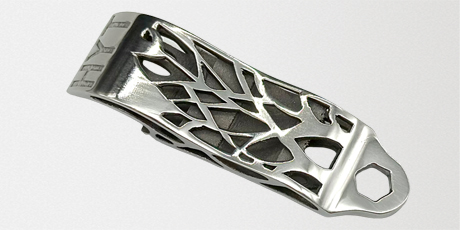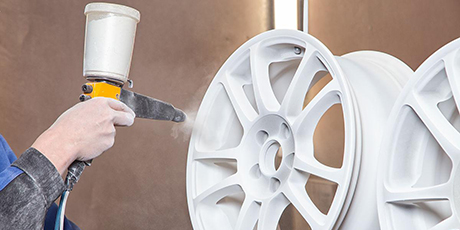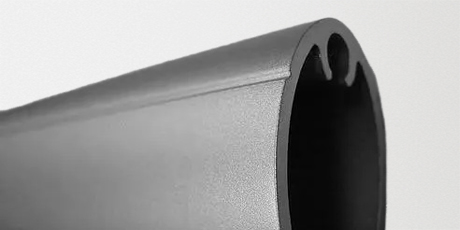
Quick Look
| Density | Melting Point | Thermal Conductivity | Electrical Resistivity | Coefficient of Expansion |
|---|---|---|---|---|
| 7.7-8.0 g/cm³ | 1400-1450°C | 16-25 W/m·K | 0.7-0.8 µΩ·m | 16-18 µm/m·K |
About the Material
Advantages:
Corrosion Resistance: Stainless steel provides excellent resistance to rust and corrosion, ideal for use in harsh and corrosive environments.
High Strength: Stainless steel castings have high tensile and yield strength, making them suitable for load-bearing applications.
Heat Resistance: Stainless steel maintains its properties at elevated temperatures, making it ideal for high-temperature applications.
Complex Geometries: Rapid Investment Casting allows for the production of complex shapes, reducing the need for machining and assembly.
Biocompatibility: Stainless steel is biocompatible, making it suitable for medical implants and surgical instruments.
Limitations:
High Cost: Stainless steel is more expensive compared to other casting materials, which can increase the overall cost of production.
Machining Difficulty: Stainless steel is harder to machine, requiring specialized tools and techniques, which can increase post-processing time and costs.
Weight: Stainless steel is heavier compared to other alloys like aluminum, which may be a limitation in applications where weight reduction is crucial.
Porosity Issues: The casting process can sometimes lead to porosity, which may require additional processing to ensure the integrity of the part.
Chemical Properties Table
Element | Iron (Fe) | Chromium (Cr) | Nickel (Ni) | Manganese (Mn) | Carbon (C) | Silicon (Si) |
Typical Percentage (%) | 65-75 | 16-20 | 8-12 | ≤ 2.0 | ≤ 0.08 | ≤ 1.0 |
Machining Properties Table
Property | Machinability Rating | Cutting Speed (m/min) | Tool Wear Resistance | Coolant Requirement | Surface Finish Quality |
Value | Moderate | 30-80 | High | Required | High |
Rapid Investment Casting Stainless Steel Design Parameters
| Maximum Bulid Size (mm) | Minimum Wall Thickness (mm) | Minimum Assembly Gap (mm) | Tolerance | Minimum End Mill Size (mm) | Minimum Drill Size (mm) |
| 600x600x600 | 1 | 0.1 | 0.30% | / | / |
Industry Applications and Case Studies for Rapid Investment Casting Stainless Steel:
Medical Industry:
Application: Production of surgical instruments, orthopedic implants, and dental tools.
Case Study: A medical device manufacturer used Rapid Investment Casting to create custom stainless steel surgical instruments, achieving high precision and biocompatibility for improved patient outcomes.
Aerospace Industry:
Application: Manufacturing of structural components, turbine blades, and fasteners.
Case Study: An aerospace company employed Rapid Investment Casting to produce stainless steel brackets, reducing weight and enhancing the strength of the aircraft structure.
Food Processing Equipment:
Application: Production of components such as nozzles, valves, and fittings.
Case Study: A food equipment manufacturer used stainless steel to produce corrosion-resistant parts, ensuring compliance with hygiene standards and longevity in a high-moisture environment.
Automotive Industry:
Application: Manufacturing of exhaust components, brackets, and other high-strength parts.
Case Study: An automotive manufacturer utilized stainless steel for exhaust system components, ensuring resistance to high temperatures and corrosion for enhanced performance.
Frequently Asked Questions (FAQs) about Rapid Investment Casting Stainless Steel:
What are the benefits of using stainless steel in Rapid Investment Casting?
Stainless steel offers corrosion resistance, high strength, heat resistance, and biocompatibility, making it ideal for a wide range of applications.
Is Rapid Investment Casting suitable for high-volume stainless steel production?
Rapid Investment Casting is most cost-effective for prototyping and low to medium production volumes. For very high volumes, other casting methods may be more economical.
What industries benefit from stainless steel in Rapid Investment Casting?
Industries such as medical, aerospace, food processing, and automotive benefit from stainless steel's durability, corrosion resistance, and strength.
How does stainless steel compare to aluminum in terms of cost and performance?
Stainless steel is more expensive and heavier than aluminum but offers better corrosion resistance, strength, and heat resistance.
What are the limitations of using stainless steel in Rapid Investment Casting?
Limitations include higher cost, machining difficulty, weight, and potential porosity that may require additional inspection and processing.
What are the typical applications for stainless steel in Rapid Investment Casting?
Typical applications include medical instruments, aerospace components, food processing equipment, and automotive exhaust systems.
How can porosity in stainless steel castings be minimized?
Proper control of the casting process, including degassing and using high-quality molds, can help reduce porosity in stainless steel castings.
Is stainless steel suitable for medical applications?
Yes, stainless steel is biocompatible and commonly used for medical implants, surgical instruments, and dental tools due to its corrosion resistance and safety for use in the human body.
Finishing Options












Parts Made by AutofabX


